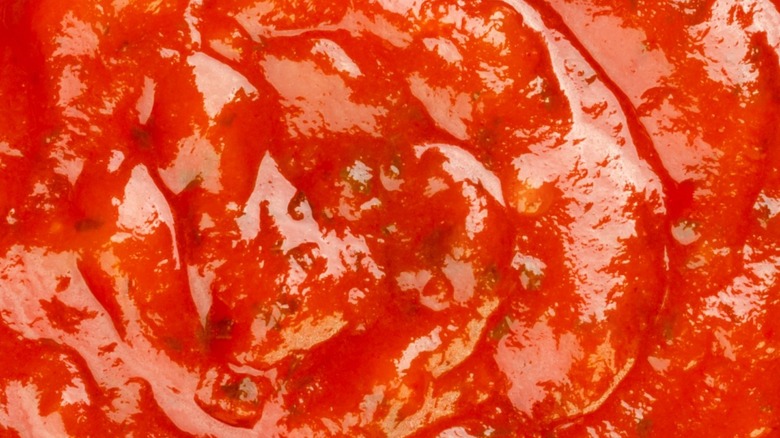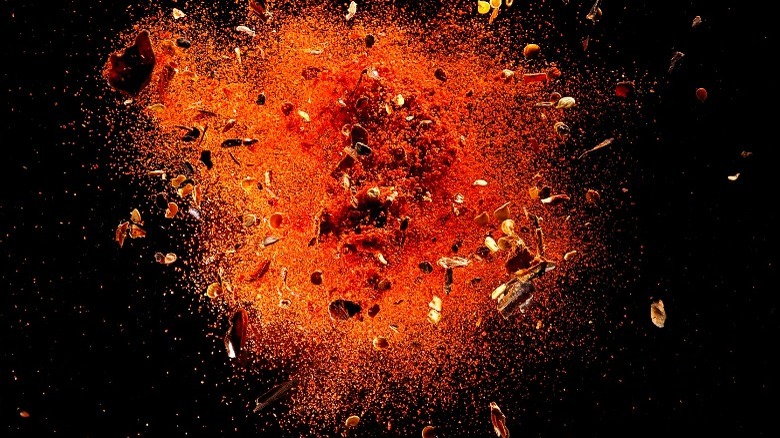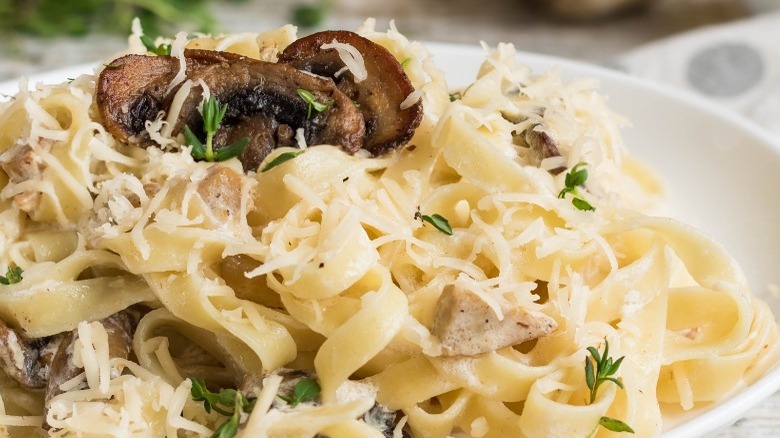The Ingredient That Will Majorly Upgrade Your Canned Pasta Sauce
Opinions about pasta sauce are nearly as plentiful and varied as the directions in which you can take pasta as a dish. That includes how firm the noodles should be, which proteins pair best with which pasta sauces, and what to drink with pasta. One statement that most people can agree with, however, is that pasta sauce from a can or a jar can be quite bland.
Sometimes, canned pasta sauce is a necessary evil, though. Not all home cooks are the super Italian parents who managed to make noodles and sauce from scratch every day while somehow simultaneously raising three children. Convenience simply wins out on some occasions. Still, the fact remains that it's difficult for facilities that produce pasta sauce on a mass scale to replicate the aromas and flavors that come with freshly stewed tomatoes or Alfredo sauce from cheese grated the same day.
Canned pasta sauce doesn't have to be a letdown, though. One ingredient can upgrade the consistency and taste of canned sauce — and you likely already have it in your kitchen.
Red pepper is the secret ingredient
Some canned pasta sauces already use red pepper in their recipes. For example, the Hunt's website lists crushed red pepper among the ingredients for its "Zesty and Spicy" sauce. In many recipes, though, the list of dry ingredients is meager.
That's why adding additional spices, such as red pepper, can upgrade canned pasta sauce. Gnocchi Bar recommends it as one of its eight ways to elevate canned pasta sauce. The Pioneer Woman has red pepper flakes on her shortlist, too. Red pepper is a spectacular choice because it provides a contrast of texture with the creaminess of the sauce, in addition to introducing a heat element. It also adds a nice visual contrast, especially to white sauces. Even with tomato-based sauces, red pepper flakes act as a finishing touch to give pasta bowls a handcrafted appearance.
Red pepper spices usually derive from cayenne peppers, according to Cooked Best. Cayennes are one of the more mild chili peppers in terms of heat, ranging between 30,000 and 50,000 Scoville Units, per Pepperheads For Life. (That's still a far cry from some of the world's hottest peppers, including the two million Scoville Unit Infinity chili.)
As with any other spice, the amount of heat red pepper can bring to your favorite jarred Alfredo or marinara depends on how heavily you use it. Like how those Italian parents balance making pasta sauce with ensuring the kids stay out of trouble, balance is the key to maximizing the flavor.
Let your palate be your guide
Experienced cooks know that if you aren't tasting your food as you go along, you're running the risk of over-seasoning your food. This definitely applies when you're adding red pepper to a canned pasta sauce — you could ruin it if you're overzealous.
This is also when you want to consider the preferences of anyone else you're cooking for. For some people, a little spice goes a long way. If you prefer less or more spice than someone you're cooking for, you can simply split the sauce into separate vessels quite easily.
Whether you use red pepper in flaked or crushed form is simply a of taste; either choice will deliver the same flavor profile. Spices Masala says that flakes tend to be larger in size and carry a grainier texture. Whatever form it's in, red pepper is an easy addition that can make a big difference when the convenience of canned pasta sauce wins out. But make your canned pasta sauce taste homemade with red pepper and everyone who eats it — maybe even an Italian grandma — will say "Grazie!"


